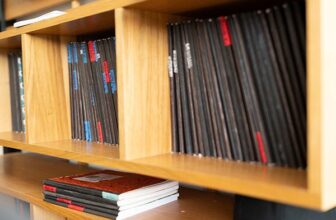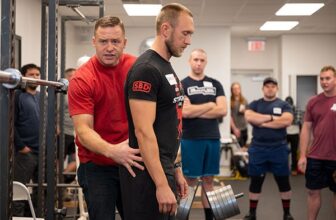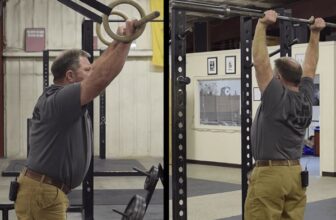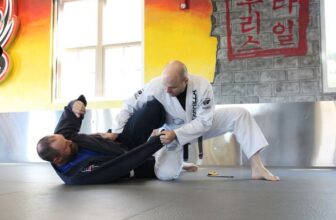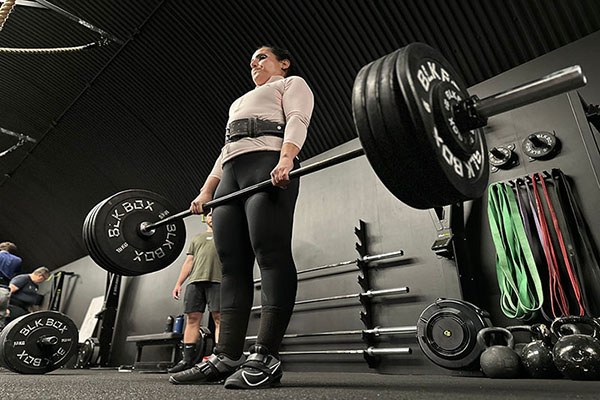
[adinserter block=”2″]
December 11, 2023
On Starting Strength
-
Trains, Rattlesnakes, and Kids Doing the Program –
Rip answers questions live from Starting Strength Network subscribers and fans. -
Bodyparts vs. Movement Patterns by Mark Rippetoe –
It’s quite apparent that very little thought has been given to training for strength – and therefore size – by the millions of people who read about it on the internet… -
He’s in the Best Shape of His Life at Age 41 –
Ray Gillenwater talks with Austin Force about his journey to becoming the financial expert at Starting Strength Gyms, prioritizing health and fitness, the keys to success in entrepreneurship, and contributing value to society. -
The Effect of Arm Angle in the Supine Grip in the Deadlift by Mia Inman –
Efficient pulling mechanics in the deadlift are constrained by three factors: 1) the bar must be placed directly over the mid-foot, and maintain that position… -
Invest Now or Suffer the Costs Later. The Choice is Yours. –
Andy discusses the transformative impact that Starting Strength had on his career. By focusing on training consistently and nutrition, he enhanced his capacity to attend to patients, saw significant health benefits, and shed over 100 pounds. - Weekend Archives:
Strength Training is Not “Fat Loss” Training. And Neither is Aerobics by Robert Santana ndash;
Aerobic exercise has been the dominant exercise prescription since large commercial gyms came into the marketplace. - Weekend Archives:
Your Gut, Your Health, and Situps by Mark Rippetoe –
“Shouldn’t you just do some abs?” (I get some of the best article ideas from the comments sections.) Low bodyfat is healthy, and six-pack abs is the proxy for low bodyfat levels…
In the Trenches
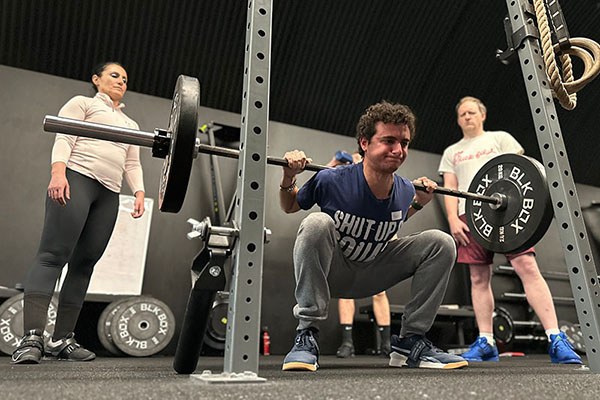
Alex preparing for hip drive at this past weekend’s training camp led by Carl Raghavan in the UK. [photo courtesy of Carl Raghavan]

Ana showing a lovely lockout in her pull at the same camp. [photo courtesy of Carl Raghavan]
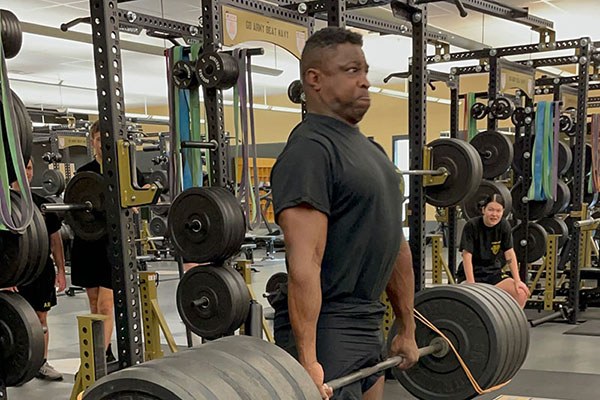
Cadets have the opportunity to earn performance points based on single sets of 5 across the squat, press, deadlift, and bench press during PE262 Strength Development at West Point. [photo courtesy of Gress Hess]
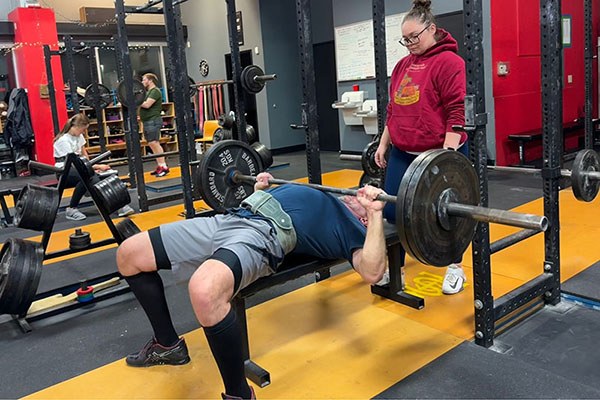
Russ benches 230 lb for sets of five under the watchful spotting of Jamie at Testify Strength & Conditioning in Omaha, NE. [photo courtesy of Phil Meggers]
Meet Report
Last Sunday, Fivex3 Training hosted their 5th Annual Stronger Together Partners Meet to benefit the Music Therapy Program at Gilchrist Hospice of Towson. They raised over $3000 for the program and enjoyed a great morning of heavy lifting.
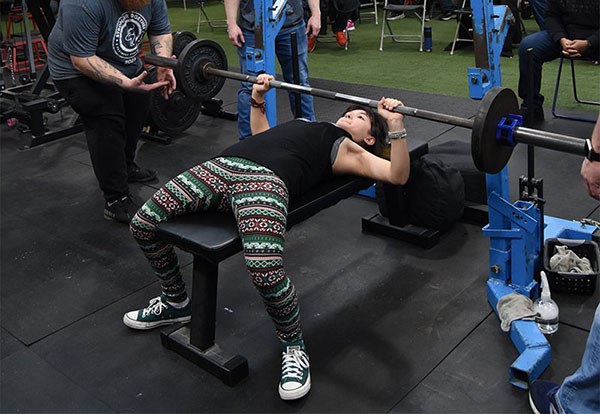
Alisha, age 16, benches 95 lb for her 2nd attempt. [photo courtesy of Anne Costello]
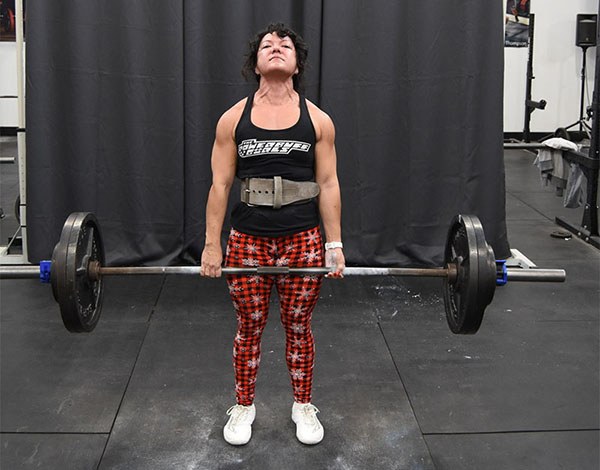
Jennifer Irr, mother of Alisha, completed her third attempt with a 300 lb deadlift. [photo courtesy of Anne Costello]
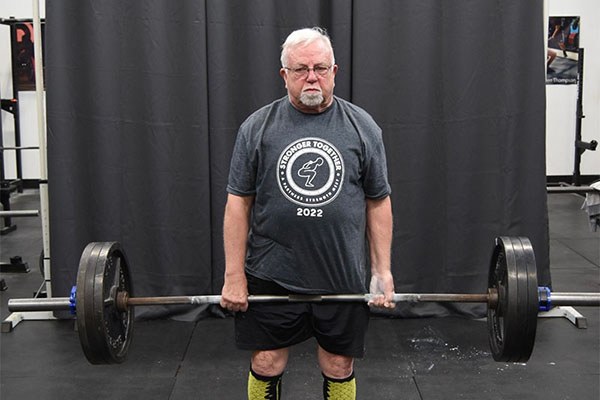
78-year-old Ralph Youngs, deadlifts 340 lb for his final attempt. [photo courtesy of Anne Costello]
Get Involved
Best of the Week
Getting my father to train
Danis
Hey Rip, my father has recently been dealing with some pain in legs and hips. He is 63 y/o male 5 ’10’ ‘ 200-210ish pounds and has never trained. Arthritis runs in the family.
X-Ray for lumbar revealed:
- Marked narrowing L5-S1 disc space with grade 1 anterolisthesis of L5 over S1
- Small posterior osteophytes
- Moderate narrowing L4-5 disc space with small anterior and posterior osteophytes
- Small anterior osteophytes on rest of lumbar vertebral bodies with relative preservation of remaining intervertebral disc spaces
Pelvis:
- Mild osteopenia
- Mild degenerative changes in bilateral sacroiliac joints
- Mild narrowing of bilateral hip joint with small osteophytes indicating early degenerative osteoarthritis
- Calcified phleboliths noted in pelvis
They recommended for him to go to physiotherapy, which is probably just going to include some mobility and telling him to take it easy. I want to get him going on some training. My question is, is this just regular aging and should he just start training? Is there anything he should be cautious of with this diagnosis? He has also thrown his back out a few times over the years and is concerned with this happening while lifting. I want to steer him in the right direction without making anything worse.
Mark Rippetoe
He has a normal 63-year-old spine. Here is the question: Have you ever made your father do anything?
‘
Danis
Hell no. I think he would be willing to help himself out in this scenario and start training. I just wanted to check if this was anything more serious than the normal effects of aging.
Mark Rippetoe
Our experience has been that low-level back pain goes away after about 3 weeks of the program.
Best of the Forum
Definition of intensity in PPST
Peter Bex
I apologize if this has been asked before, but a quick search of the forums didn’t turn up anything. I also haven’t been able to find a page with errata for PPST.
Anyway, here goes: I’m currently re-reading PPST 3rd ed. with a bit more attention (as in, actually studying it), and have a question about the definition of intensity. On page 29 it says:
Intensity is the average weight lifted in a workout or group of workouts relative to the trainee’s 1RM (“one-rep max,” or the maximum weight that the trainee can lift for a single repetition):
volume / repetitions = average weight used
average weight used / 1RM x 100 = % intensity
But the definition of volume says:
Volume is the total amount of reps performed in a workout or group of workouts, usually excluding warm-up reps.
When volume is the total number of reps, that first equation in the definition of intensity would always result in 1 as that would mean it’s essentially volume / volume. I assume what’s meant there is:
tonnage / repetitions = average weight used
That would still leave me with the question whether we should use work set tonnage or total tonnage (including warm-up sets) for the definition of intensity. Including the warm up sets would just drag down the average weight used, so my (again) assumption is that it would be work set tonnage.
Peter Bex
Of course, 5 minutes after posting I realized the answer is in the example given below. It’s indeed total tonnage / repetitions = average weight used. Still, might be worth publishing an erratum for.
Andy Baker
Don’t overthink.
Volume is the total number of sets and reps independent of load.
Intensity is weight on the bar. If I squat 3x5x135 today then the intensity is 135 lbs.
Tonnage is volume x intensity.
Intensity can be expressed as a percentage of 1RM in some circumstances. If you’re trying to illustrate what the Texas Method is for someone it doesn’t really do any good to say “Squat 5×5 on Monday, 2×5 on Wednesday, and 1×5 on Friday.”
In those circumstances when we’re referencing a hypothetical trainee or trying to illustrate an example then we will refer to load as a % of 1RM. We might then say “Monday Squat 5×5@75-80%, Wednesday Squat 2×5@70%, and Friday Squat 1×5@80-85%.”
[adinserter block=”2″]
Credit : Source Post




